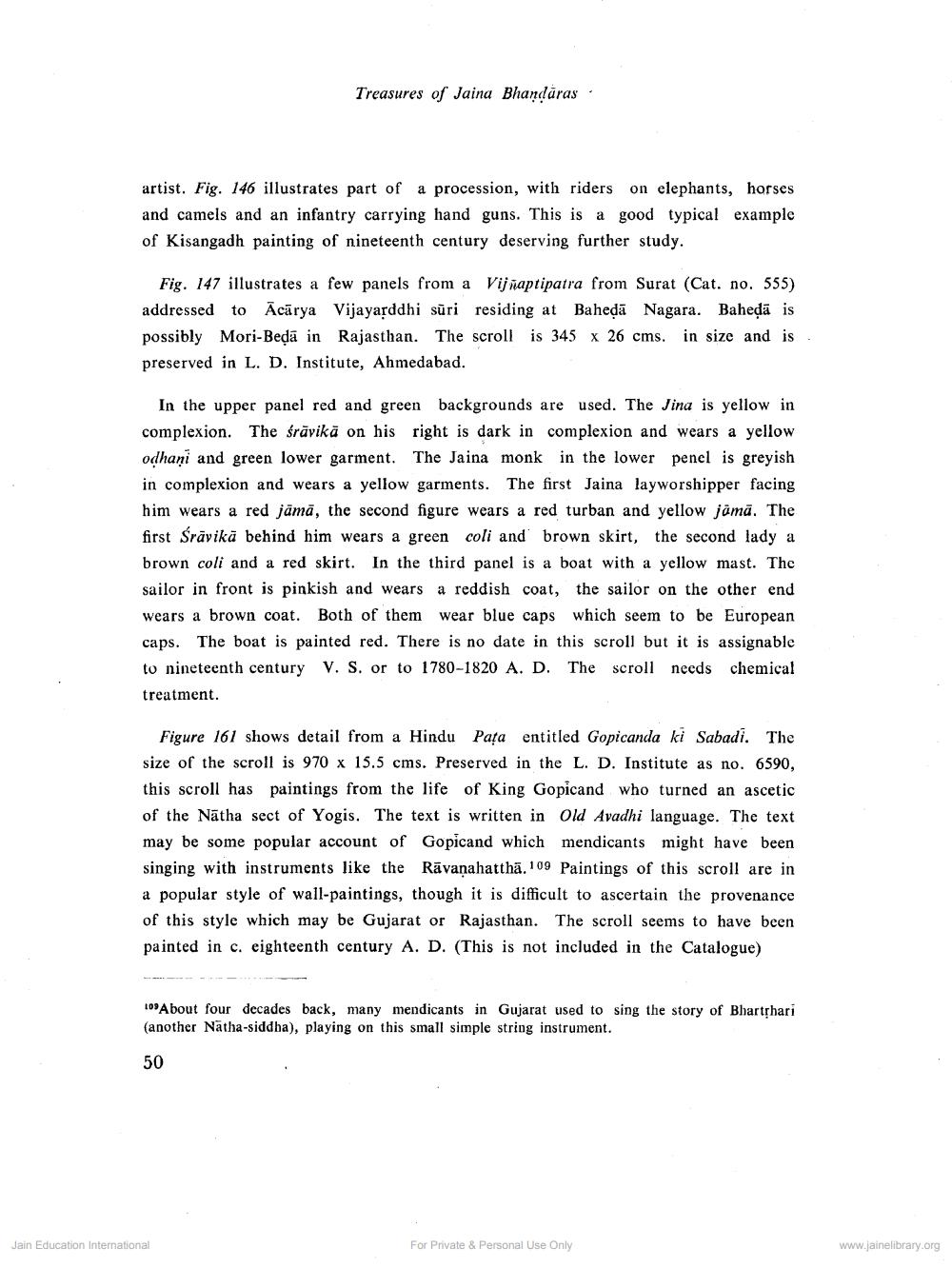________________
Treasures of Jaina Bhandaras
artist. Fig. 146 illustrates part of a procession, with riders on elephants, horses and camels and an infantry carrying hand guns. This is a good typical example of Kisangadh painting of nineteenth century deserving further study.
Fig. 147 illustrates a few panels from a Vijñaptipatra from Surat (Cat. no. 555) addressed to Ācārya Vijayarddhi sūri residing at Bahedā Nagara. Baheļā is possibly Mori-Beda in Rajasthan. The scroll is 345 x 26 cms. in size and is preserved in L. D. Institute, Ahmedabad.
In the upper panel red and green backgrounds are used. The Jina is yellow in complexion. The śrāvikā on his right is dark in complexion and wears a yellow odhani and green lower garment. The Jaina monk in the lower penel is greyish in complexion and wears a yellow garments. The first Jaina layworshipper facing him wears a red jāmā, the second figure wears a red turban and yellow jāmā. The first Srāvikā behind him wears a green coli and brown skirt, the second lady a brown coli and a red skirt. In the third panel is a boat with a yellow mast. The sailor in front is pinkish and wears a reddish coat, the sailor on the other end wears a brown coat. Both of them wear blue caps which seem to be European caps. The boat is painted red. There is no date in this scroll but it is assignable to nineteenth century V. S. or to 1780-1820 A. D. The scroll needs chemical
treatment.
Figure 161 shows detail from a Hindu Pața entitled Gopicanda ki Sabadi. The size of the scroll is 970 x 15.5 cms. Preserved in the L. D. Institute as no. 6590, this scroll has paintings from the life of King Gopicand who turned an ascetic of the Nātha sect of Yogis. The text is written in Old Avadhi language. The text may be some popular account of Gopicand which mendicants might have been singing with instruments like the Rāvanahatthā. 109 Paintings of this scroll are in a popular style of wall-paintings, though it is difficult to ascertain the provenance of this style which may be Gujarat or Rajasthan. The scroll seems to have been painted in c. eighteenth century A. D. (This is not included in the Catalogue)
109About four decades back, many mendicants in Gujarat used to sing the story of Bharthari (another Natha-siddha), playing on this small simple string instrument.
50
Jain Education International
For Private & Personal Use Only
www.jainelibrary.org




